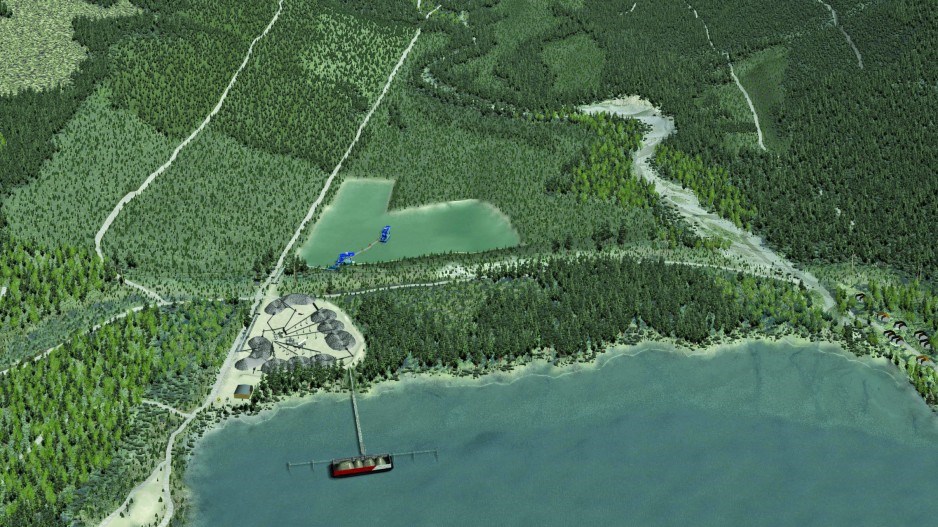After changes to the size and scope of its project, Burnco Rock Products Ltd.’s proposed aggregate mine in Howe Sound has entered the public comment phase of its provincial and federal environmental assessment application.
Proposed by the Calgary-headquartered company is a McNab Valley mine that would produce on average one million tonnes of sand and gravel each year over 16 years. Once a day, barges would transport material from a 30-hectare aggregate pit up the Fraser River to Burnco facilities in Burnaby and Langley.
According to Burnco CEO Mike Powell – who attended three public information sessions in Squamish, Gibsons and West Vancouver in September – the new project proposal takes into account concerns around noise, as well as the project’s potential impact on fish habitats: an issue that raised opposition to the original proposal from members of the public, environmentalists and the Department of Fisheries and Oceans (DFO).
“We got into more detail about just how much material is safely mineable at the site. That was a big consideration,” said Powell. “There’s a very major setback between the project and McNab Creek. So we do not go into the creek; we do not go near the creek.”
Ruth Simons, executive director of the Future of Howe Sound Society, has followed the project for years and has yet to be convinced that the company’s new project plan properly addresses environmental concerns.
“So far we don’t see any benefit whatsoever, only detrimental effects,” said Simons, who attended the public information session in Squamish. “They have adjusted the project to address a lot of the major concerns that there were before, but it really remains to see if Fisheries and Oceans is comfortable with the engineering, the preventive measures that they’re going to have in place.”
In 2011, the DFO’s regional director general for the Pacific region wrote a letter to Burnco that listed certain concerns around how the project would affect fish and fish habitats. After considering a report by an independent review team of fish habitat experts, as well as Burnco’s response to that report, the DFO’s Susan Farlinger noted that impact on fish habitats “is likely significantly greater than currently presented by Burnco.”
She also wrote that the proposed project’s negative effect on fish habitats garnered it a “high risk” project ranking.
But in its environmental assessment certificate application, Burnco claimed the proposed project would not reduce the fish habitat’s quantity or quality.
It also concluded the project could benefit water flows in McNab Creek, a spawning habitat for several species of salmon and trout.
Critics disagree.
“If you went to McNab Creek right now, you would probably find that the creek is completely impassable for salmon,” said John Buchanan, a local environmentalist who has studied the project closely. “The creek completely dries up. It goes sub-surface.”
He said gravel removal could result in the bottom falling out of the creek.
“The proposal is far too risky for the creek itself. That’s the big red flag for me.”
However, Burnco’s report maintained that its operations would reduce McNab Creek’s dry periods.
If the company’s project is approved, barges would save it from using 416 gravel trucks per day to transport its aggregate. It would also be able to stock its sites with its own, rather than other companies’, sand and gravel.
Even if the project receives environmental assessment approval, Burnco still requires the Sunshine Coast Regional District to approve the site’s rezoning for industrial applications, as well as mine and building permits, water and well licences and other requirements.
But Burnco believes there’s enough demand to make the project worth it.
“When you look at the Greater Vancouver area and really B.C. as a whole, it’s growing. People are coming in, there’s greater development, it just consumes that much more material,” said Powell. “We’re seeing that reserves are depleting all over the place, that they need to be replaced. This is a key piece of that.” •




